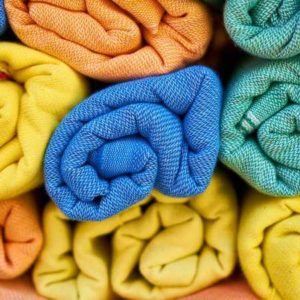Quality management is an integral factor in the growth and sustainability of any business. Efficient quality management, which has the highest impact on customer experience, is essential for any business.
The seven essential tools of quality management, also known as 7QC tools, are very effective in quality management and the quality assurance process. So, businesses who want to ensure the competitively and excellent quality of their products and services can utilize the proven 7QC tools for structuring a strategic plan for quality improvement.
This article will help you understand the 7 QC tools and their use in the apparel/manufacturing industry.
The 7 Basic Tools of Quality are (7 QC tools) :
- Cause and Effect Diagram (or Ishikawa Diagram or Fishbone Diagram)
- Control Chart
- Pareto Chart
- Scatter Diagram
- Histogram
- Check Sheet
- Flow Chart
1. Cause and Effect Diagram/Fishbone Diagram
Cause and Effect Analysis was devised by professor Kaoru Ishikawa, a pioneer of quality management, in the 1960s. The technique was then published in his 1990 book, “Introduction to Quality Control.” Due to that it is known as Ishikawa Diagrams or Fishbone Diagrams (because a completed diagram can look like the skeleton of a fish). It was originally developed as a quality control tool, but we can use the technique in many other ways.
For instance, you can use it to:
- Discover the root cause of a problem.
- Uncover bottlenecks in your processes.
- Identify where and why a process isn’t working.
Most cause and effect diagrams examine a similar set of possible causes for any issue analyzed. It is important to categorize factors in cause and effect analysis so that everyone can understand them better. During the discussion and draft phases of cause and effect analysis, the 6M method should be applied.
In the manufacturing industry, these are referred to as the 6Ms:
Methods:- Are there well-written and appropriate training guidelines in place? Operators are well aware of the process method? Are certain policies or regulations causing slow-downs or creating unnecessary steps?
Machines:- Are there any issue with the machine, maintenance or the tools used or the number of tools available?
Materials:- Are there any issues getting materials from internal or external suppliers (for example:- buttons or labels not in house or no input available to feed the line.) ? Any problems with transportation (timing) or with the quality of the supplies?
Measurements:- There can be errors in calculation or contamination that caused false readings? Could the way QC measure be inconsistent in some way? Are the equipment regularly calibrated and maintained?
Mother Nature/Environment:- Is there too much moisture in the environment? Are temperatures too hot or too cold? Is there excessive dust or other contamination?
Manpower/People:- Do you have too less of your workforce devoted to a process? Are new people adequately trained and understand the process? Is the training consistent? Are the right people with the right experience being hired? Is there a specific position creating a bottleneck or making frequent mistakes?
2. Control Chart
Once a manufacturing process has been center lined and is running relatively well, we need to measure and track important product characteristics. We can use process control charts for this purpose.
A control chart has the following components:
Center line: The center line in the control chart is the desired ideal capability or the required outcome of a process. The Center line is the calculated mean of data points. These data points are repetitive process output with time.
Specification limit: Specification limits are established usually after analysis of customer expectations. Sometimes these limits are mentioned in the product specifications. There could be penalties and claim associated if data points exceed the specification limit.
Control Limits: The upper and lower control limits for control charts are designed or decided using statistical analysis or from historical records or by the given standards or tolerances. We plot data points of a process to perform trend analysis toward either of control limits and with respect to the center line.
The main purpose of control charts is to keep a check if a process is stable and in-control/within tolerance, or unstable and out-of-control/out of tolerance.The control chart always has a central line for the average, an upper line for the upper control limit, and a lower line for the lower control limit. These lines are determined from historical data.By comparing current data to these lines, you can draw conclusions that whether the process variation is consistent (in control) or is unpredictable (out of control, affected by special causes of variation).
3. Pareto Chart:-
A Pareto Chart is a combination of a bar graph and a line graph. Pareto Diagram is a tool that arranges items in the order of the magnitude of their contribution, thereby identifying a few items exerting maximum influence. Pareto Charts are useful to find the defects to prioritize in order to observe the greatest overall improvement.
This tool is based upon the Pareto principle, the principle that 80% of an outcome/Defects comes from 20% of its inputs/problems. Vilfredo Pareto, an Italian engineer and economist, first observed the 80/20 rule in relation to population and wealth. At the beginning of the 20th century, Pareto noted that in Italy and several other European countries, 80% of the wealth was controlled by just 20% of the population.
The purpose of the Pareto chart is to highlight the most important defects/problems and factors. It can also analyze the frequency of problems or defects in a process
The left-side vertical axis of the pareto chart is labeled Frequency (the number of counts for each category), the right-side vertical axis of the pareto chart is the cumulative percentage, and the horizontal axis of the pareto chart is labeled with the group names of your response variables.
4. Scatter Diagram:-
Scatter Diagram is another quality management Tool that can be used to show the relationship between pairs of numerical data and can provide more useful information about a production process.
In scatter diagram graphs you need to put one variable on each axis, to look for a relationship between them.
If the variables are correlated, the points will fall along a line or curve. The better the correlation, the tighter the points will hug the line..
For example, you could consider the relationship between the needle size and the holes found in the garments; between the cutting speed of a blade and the variations observed in length of cut parts; or the relationship between the lightning levels on the production floor and the mistakes made in quality inspection of product produced.
Type of Correlation in Scatter Diagram:
Positive: In this case pattern of observations slant from lower left to upper right of the chart. When a value of an independent variable gets increased, as a result the value of dependent variable also gets increased.
For example productivity of an operator member increases with its experience.
Negative: In this case pattern of observations slant from upper left to lower right of the chart. Value of the dependent variable gets to decrease if the value of the independent variable gets the increase. For example, the number of garment workers in the country, decreasing in years.
Null: There is no correlation between two variables and observations are scattered into the chart. For example, there will be no correlation in the maternity leave sanctioned to the team member as per their height.
5. Histogram
A Histogram is a quality managemnt tool that graphically displays a data set. More specifically, a Histogram is a type of Bar Chart that graphs the frequency of occurrence of continuous data, and will aid you in analyzing your data. It shows the frequency of a cause of a problem occurring where the height of the bar as an indicator of the most affecting reason.
Histogram can offer a powerful analysis of your problems. It looks very much like a bar chart, but there are important differences between them.
What is the difference between a bar chart and a histogram?
The major difference is that a histogram is only used to plot the frequency of score occurrences in a continuous data set that has been divided into classes, called bins. Bar charts, on the other hand, can be used for a great deal of other types of variables including ordinal and nominal data sets.
Components of a Histogram
The Title: The title describes the information included in the histogram.
X-axis: The X-axis are intervals that show the scale of values which the measurements fall under.
Y-Axis: The Y-axis shows the number of times that the values occurred within the intervals set by the X-axis.
The bars: The height of the bar shows the number of times that the values occurred within the interval, while the width of the bar shows the interval that is covered. For a histogram with equal bins, the width should be the same across all bars.
6. Check Sheet
Also known as Data Collection sheets and Tally charts. A Check Sheet is a table with defined rows and columns where the data collected is usually 1 checkmark within each category. The Check Sheet is not just one of the seven quality management tools, but it’s also one of the primary tools used during the Measure Phase. It is a handy tool for both qualitative and quantitative data gathering and analysis. Check sheets help to systematically collect and organize data and are useful in all phases of the Lean Six Sigma DMAIC (define, measure, analyze, improve and control) framework.
When to use the check sheet: Using a check sheet is appropriate when the data can be observed and collected repeatedly. The check sheet can be used for:-
- To collect and analyze data at a fixed place, usually by the same person.
- To record the probability and pattern of events, defects or similar issues.
- Keeping track of steps of an established procedure in a production process
Examples of Check Sheet
Defect Location Check Sheet
Defect Type Check Sheet
End of Line Defect Check Sheet
Inline QC Table Check Sheet
7/0 Check Sheet
7. Flow Chart
A Flow Chart is a visual representation of the different, usually sequential steps involved in a process, service or event. Flow charts are one of the best process improvement tools you can use to analyze a series of events. They map out these events to illustrate a complex process in order to find any commonalities among the events.
You can use Flow Chart for:
- Planning new project
- Documenting a new process
- Managing Workflow
- Understanding of how a process is done
- Studying a process for improvement
Commonly Use Symbols in Flowchart
Terminator:- The terminator symbol represents the starting or ending point of the system.
Process:- A box indicates some particular operation.
Document:- This represents a printout, such as a document or a report.
Decision:- A diamond represents a decision or branching point. Lines coming out from the diamond indicates different possible situations, leading to different sub-processes.
Data:- It represents information entering or leaving the system. An input might be an order from a customer. Output can be a product to be delivered.
Key Benefits of 7QC Tools
Benefits of 7 QC Tools
- 7QC Tools improve management decision making skills.
- 7QC Tools collect, present, Identify, and analyze data.
- 7QC Tools helps implement Six Sigma
- 7QC Tools control cost of poor quality
- 7QC Tools reduce variations and improve quality
- 7QC Tools reduce defects and improve production
- 7QC Tools reduce cycle time and improve efficiency







